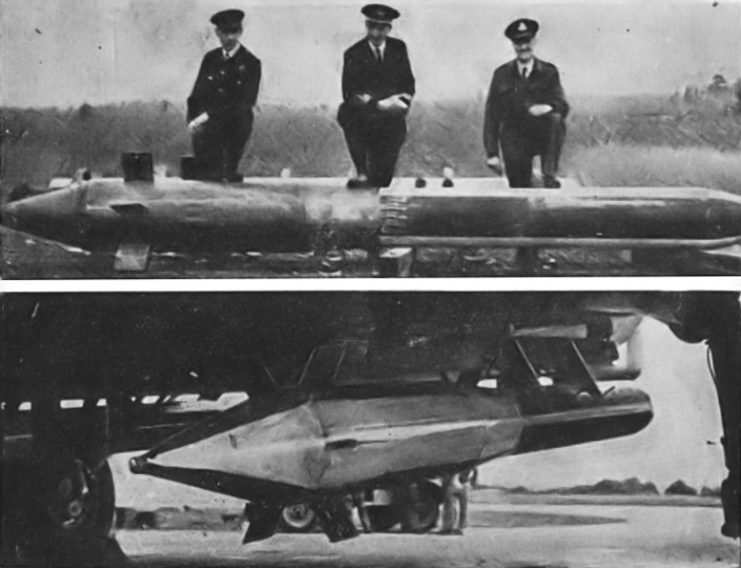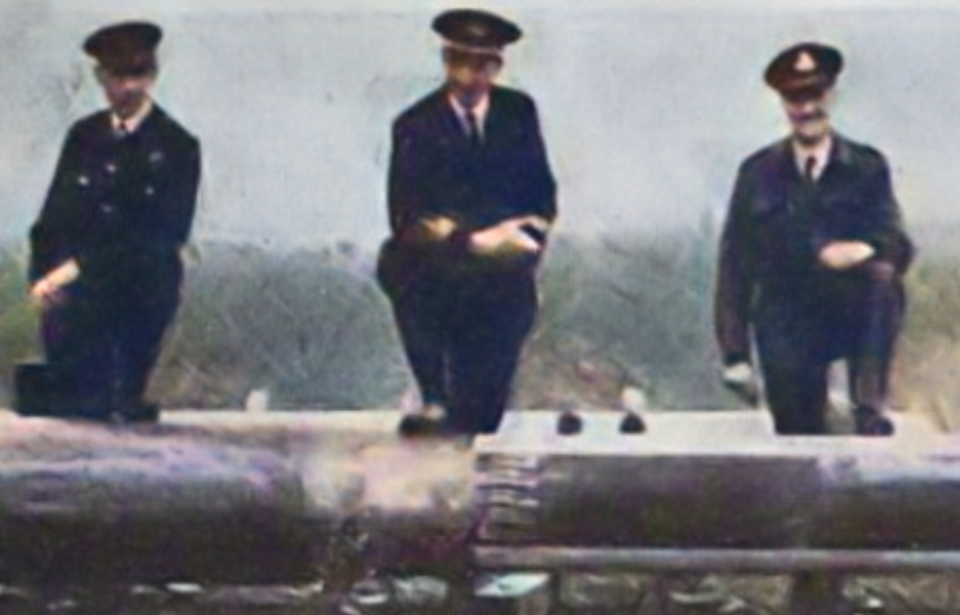During WWII if you needed to destroy a heavily reinforced bunker, you needn’t look further than either the Tallboy bomb or its bigger sibling the Grand Slam. Weighing six tons and 11 tons respectively, there wasn’t much outside of a mountain that could stop these super-sized weapons. However, a lesser-known bunker buster was also developed during the war, the rocket-powered Disney bomb.
Contrary to popular belief, Tallboy and Grand Slam bombs weren’t actually designed to penetrate concrete although they were very good at it anyway. They were “earthquake bombs”, designed to burrow into the ground next to a structure before exploding. When detonated their explosive energy passed through the soil, rocking the foundations of the structure with a localized earthquake and rendering it uneconomic to repair.
The bomb had to travel at immense speeds to burrow into the ground, and also had to survive the impact so the explosives would function properly. To do this the bomb’s casing was extremely aerodynamic and made of high-tensile steel. It would reach speeds of up to 750 mph on its descent.
As a happy byproduct of such a design, both the Tallboy and Grand Slams possessed excellent concrete penetration, despite this not being their intended purpose.
On the other hand, the Disney bomb was designed from the start to pierce as much concrete as possible.
The Disney bomb

The Disney bomb is a relatively obscure weapon also designed by the British during WWII. Like the earthquake bombs, it was meant to destroy hardened targets immune to conventional ordnance but went about it in a very different manner.
Instead of rocking a structure’s foundation, the Disney bomb would punch straight through its toughened roof. Officially called the 4500 lb Concrete Piercing/Rocket-Assisted bomb, it was known as the Disney bomb as its concept was inspired by a propaganda film produced by Walt Disney Studios.
This idea started in 1943, but the bomb wouldn’t reach service until 1945.
Extreme velocities are critical when it comes to the penetrating power of a projectile. Barnes Wallis’ recognized this, hence designing his earthquake bombs to be very aerodynamic. These bombs relied on a high terminal velocity to reach high speeds.
The Disney bomb used rockets.
The bomb was an odd shape; more closely resembling a dart than a conventional bomb, and was tipped with a thick steel shell. It was 5 meters (16 ft 6 in) long, 280 mm (11 in) wide, and weighed 2,000 kgs (4,500 lbs), significantly less than a Tallboy.

As it was intended to detonate inside the structure, the Disney bomb only carried 230 kg (500 lbs) of explosive filling, compared to the 2.5 tons of filling inside the Tall Boy. Behind the bomb’s body was a section that contained its rocket motors – all nineteen of them – and behind that a tail cone that housed the ignition circuits. These circuits were powered by a small generator which was spun by a vane at the rear of the bomb.
After being released at around 20,000 ft, the Disney bomb would free-fall until 5,000 ft, at which point the rocket motors would ignite and blast off the rear cone. The rockets only burned for three seconds but accelerated the Disney bomb past the sound barrier and up to 990 mph, or Mach 1.29 – much faster than the Tallboy’s decent speed of 750 mph. Upon impact, the bomb could punch through 4.5 meters of concrete.
Usage

(US Army / Wikipedia / Public Domain)
Although these figures are certainly impressive, in practice the bomb was quite a handful. As they were boosted by rockets, the Disney bombs did not descend like conventional free-fall bombs and therefore needed to be operated differently with bombsights needing to be recalibrated.
The main issue was inherent in their design and purpose: they needed to score a direct hit on the target to work properly. Scoring direct hits in the 1940s was a tough task. In fact, this is partly why carpet bombing was so popular, as they simply lacked the ability to accurately and consistently hit a target. Saturating the general area around a target was the only real way to guarantee a hit at the time.
While this is more of an issue caused by the technology of the day, the Disney bombs’ practical use was limited because of it. Barnes Wallis’ earthquake bombs circumvented this problem by intentionally missing the target.
Additionally, the Disney bombs’ rather small explosive content meant it caused little damage after successfully penetrating the roof of a bunker.
They were designed and built by the British, but only the US ever used them, dropping 158 in combat. As they were relatively small compared to the Tallboys and Grand Slams, the Disney bomb could be carried by the B-17.
When the war ended the bombs had still not been thoroughly tested, so post-war tests were conducted to see how they faired against concrete. It was during these tests that the Allies found the Disney bombs could pierce 4.5 meters of concrete. After the tests, they estimated that the bombs could theoretically pierce over 5 meters of concrete.
